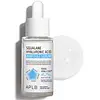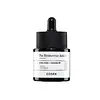What's inside
What's inside
 Key Ingredients
Key Ingredients

 Benefits
Benefits

 Concerns
Concerns

No concerns
 Ingredients Side-by-side
Ingredients Side-by-side

Water
Skin ConditioningCentella Asiatica Leaf Water
Skin ConditioningButylene Glycol
HumectantPropanediol
SolventGlycerin
HumectantDiethoxyethyl Succinate
SolventSqualane
EmollientSodium Hyaluronate
HumectantMadecassic Acid
Skin ConditioningAsiaticoside
AntioxidantAsiatic Acid
Skin ConditioningSolanum Melongena Fruit Extract
Skin ConditioningMelaleuca Alternifolia Leaf Extract
PerfumingBeta-Glucan
Skin ConditioningHippophae Rhamnoides Fruit Extract
Skin ConditioningNelumbo Nucifera Extract
Skin ConditioningArtemisia Annua Extract
MaskingOryza Sativa Extract
AbsorbentSaccharomyces Ferment
Skin ConditioningDipropylene Glycol
HumectantSodium Citrate
BufferingAllantoin
Skin ConditioningTrideceth-10
CleansingCellulose Gum
Emulsion StabilisingDisodium EDTA
Glyceryl Acrylate/Acrylic Acid Copolymer
HumectantCitric Acid
BufferingXanthan Gum
EmulsifyingInulin
Skin ConditioningCellulose
AbsorbentGlucose
HumectantFructose
HumectantEthylhexylglycerin
Skin ConditioningHydroxyacetophenone
AntioxidantSodium Polyacryloyldimethyl Taurate
Emulsion StabilisingDipotassium Glycyrrhizate
Humectant1,2-Hexanediol
Skin ConditioningWater, Centella Asiatica Leaf Water, Butylene Glycol, Propanediol, Glycerin, Diethoxyethyl Succinate, Squalane, Sodium Hyaluronate, Madecassic Acid, Asiaticoside, Asiatic Acid, Solanum Melongena Fruit Extract, Melaleuca Alternifolia Leaf Extract, Beta-Glucan, Hippophae Rhamnoides Fruit Extract, Nelumbo Nucifera Extract, Artemisia Annua Extract, Oryza Sativa Extract, Saccharomyces Ferment, Dipropylene Glycol, Sodium Citrate, Allantoin, Trideceth-10, Cellulose Gum, Disodium EDTA, Glyceryl Acrylate/Acrylic Acid Copolymer, Citric Acid, Xanthan Gum, Inulin, Cellulose, Glucose, Fructose, Ethylhexylglycerin, Hydroxyacetophenone, Sodium Polyacryloyldimethyl Taurate, Dipotassium Glycyrrhizate, 1,2-Hexanediol
Water
Skin ConditioningButylene Glycol
HumectantPropanediol
SolventGlycerin
HumectantSodium Hyaluronate 3%
HumectantPentylene Glycol
Skin Conditioning1,2-Hexanediol
Skin ConditioningDiethoxyethyl Succinate
SolventSodium Polyacryloyldimethyl Taurate
Emulsion StabilisingBetaine
HumectantXanthan Gum
EmulsifyingDimethicone
EmollientHydroxyethyl Acrylate/Sodium Acryloyldimethyl Taurate Copolymer
Emulsion StabilisingSodium PCA
HumectantSodium Lactate
BufferingPCA
HumectantGlyceryl Acrylate/Acrylic Acid Copolymer
HumectantHydrogenated Lecithin
EmulsifyingEthylhexylglycerin
Skin ConditioningSerine
MaskingAlanine
MaskingGlycine
BufferingSodium Phytate
Sorbitan Isostearate
EmulsifyingPvm/Ma Copolymer
Emulsion StabilisingGlutamic Acid
HumectantCitric Acid
BufferingLysine Hcl
Skin ConditioningThreonine
Arginine
MaskingSodium Methyl Stearoyl Taurate
CleansingProline
Skin ConditioningCeramide NP
Skin ConditioningCholesterol
EmollientCaprylic/Capric Triglyceride
MaskingPhytosphingosine
Skin ConditioningStearic Acid
CleansingOleic Acid
EmollientAlcohol
AntimicrobialTocopherol
AntioxidantLactic Acid
BufferingCaprylyl Glycol
EmollientCaprylhydroxamic Acid
Water, Butylene Glycol, Propanediol, Glycerin, Sodium Hyaluronate 3%, Pentylene Glycol, 1,2-Hexanediol, Diethoxyethyl Succinate, Sodium Polyacryloyldimethyl Taurate, Betaine, Xanthan Gum, Dimethicone, Hydroxyethyl Acrylate/Sodium Acryloyldimethyl Taurate Copolymer, Sodium PCA, Sodium Lactate, PCA, Glyceryl Acrylate/Acrylic Acid Copolymer, Hydrogenated Lecithin, Ethylhexylglycerin, Serine, Alanine, Glycine, Sodium Phytate, Sorbitan Isostearate, Pvm/Ma Copolymer, Glutamic Acid, Citric Acid, Lysine Hcl, Threonine, Arginine, Sodium Methyl Stearoyl Taurate, Proline, Ceramide NP, Cholesterol, Caprylic/Capric Triglyceride, Phytosphingosine, Stearic Acid, Oleic Acid, Alcohol, Tocopherol, Lactic Acid, Caprylyl Glycol, Caprylhydroxamic Acid
 Reviews
Reviews

Ingredients Explained
These ingredients are found in both products.
Ingredients higher up in an ingredient list are typically present in a larger amount.
1,2-Hexanediol is a synthetic liquid and another multi-functional powerhouse.
It is a:
- Humectant, drawing moisture into the skin
- Emollient, helping to soften skin
- Solvent, dispersing and stabilizing formulas
- Preservative booster, enhancing the antimicrobial activity of other preservatives
Butylene Glycol (or BG) is used within cosmetic products for a few different reasons:
Overall, Butylene Glycol is a safe and well-rounded ingredient that works well with other ingredients.
Though this ingredient works well with most skin types, some people with sensitive skin may experience a reaction such as allergic rashes, closed comedones, or itchiness.
Learn more about Butylene GlycolCitric Acid is an alpha hydroxy acid (AHA) naturally found in citrus fruits like oranges, lemons, and limes.
Like other AHAs, citric acid can exfoliate skin by breaking down the bonds that hold dead skin cells together. This helps reveal smoother and brighter skin underneath.
However, this exfoliating effect only happens at high concentrations (20%) which can be hard to find in cosmetic products.
Due to this, citric acid is usually included in small amounts as a pH adjuster. This helps keep products slightly more acidic and compatible with skin's natural pH.
In skincare formulas, citric acid can:
While it can provide some skin benefits, research shows lactic acid and glycolic acid are generally more effective and less irritating exfoliants.
Most citric acid used in skincare today is made by fermenting sugars (usually from molasses). This synthetic version is identical to the natural citrus form but easier to stabilize and use in formulations.
Read more about some other popular AHA's here:
Learn more about Citric AcidWe don't have a description for Diethoxyethyl Succinate yet.
Ethylhexylglycerin (we can't pronounce this either) is commonly used as a preservative and skin softener. It is derived from glyceryl.
You might see Ethylhexylglycerin often paired with other preservatives such as phenoxyethanol. Ethylhexylglycerin has been found to increase the effectiveness of these other preservatives.
Glycerin is already naturally found in your skin. It helps moisturize and protect your skin.
A study from 2016 found glycerin to be more effective as a humectant than AHAs and hyaluronic acid.
As a humectant, it helps the skin stay hydrated by pulling moisture to your skin. The low molecular weight of glycerin allows it to pull moisture into the deeper layers of your skin.
Hydrated skin improves your skin barrier; Your skin barrier helps protect against irritants and bacteria.
Glycerin has also been found to have antimicrobial and antiviral properties. Due to these properties, glycerin is often used in wound and burn treatments.
In cosmetics, glycerin is usually derived from plants such as soybean or palm. However, it can also be sourced from animals, such as tallow or animal fat.
This ingredient is organic, colorless, odorless, and non-toxic.
Glycerin is the name for this ingredient in American English. British English uses Glycerol/Glycerine.
Learn more about GlycerinGlyceryl Acrylate/Acrylic Acid Copolymer is made up of glycerin and polyacrylic acid. It helps hydrate your skin as a humectant.
This ingredient forms a hydrogel that delivers moisturizing, water-based ingredients to the skin. It is also used to thicken a product and to give it a smooth texture.
Acrylic acid itself is toxic, but the polymer form (this ingredient) is too large to penetrate skin, making it non-toxic.
Learn more about Glyceryl Acrylate/Acrylic Acid CopolymerPropanediol is an all-star ingredient. It softens, hydrates, and smooths the skin.
It’s often used to:
Propanediol is not likely to cause sensitivity and considered safe to use. It is derived from corn or petroleum with a clear color and no scent.
Learn more about PropanediolSodium Hyaluronate is hyaluronic acid's salt form. It is commonly derived from the sodium salt of hyaluronic acid.
Like hyaluronic acid, it is great at holding water and acts as a humectant. This makes it a great skin hydrating ingredient.
Sodium Hyaluronate is naturally occurring in our bodies and is mostly found in eye fluid and joints.
These are some other common types of Hyaluronic Acid:
Learn more about Sodium HyaluronateSodium Polyacryloyldimethyl Taurate is a polymer and used to help stabilize other ingredients.
Emulsion stabilizers hold ingredients together, helping to create an even texture throughout the product.
Sodium Polyacryloyldimethyl Taurate can also be used to thicken the texture.
Learn more about Sodium Polyacryloyldimethyl TaurateWater. It's the most common cosmetic ingredient of all. You'll usually see it at the top of ingredient lists, meaning that it makes up the largest part of the product.
So why is it so popular? Water most often acts as a solvent - this means that it helps dissolve other ingredients into the formulation.
You'll also recognize water as that liquid we all need to stay alive. If you see this, drink a glass of water. Stay hydrated!
Learn more about WaterXanthan gum is used as a stabilizer and thickener within cosmetic products. It helps give products a sticky, thick feeling - preventing them from being too runny.
On the technical side of things, xanthan gum is a polysaccharide - a combination consisting of multiple sugar molecules bonded together.
Xanthan gum is a pretty common and great ingredient. It is a natural, non-toxic, non-irritating ingredient that is also commonly used in food products.
Learn more about Xanthan Gum